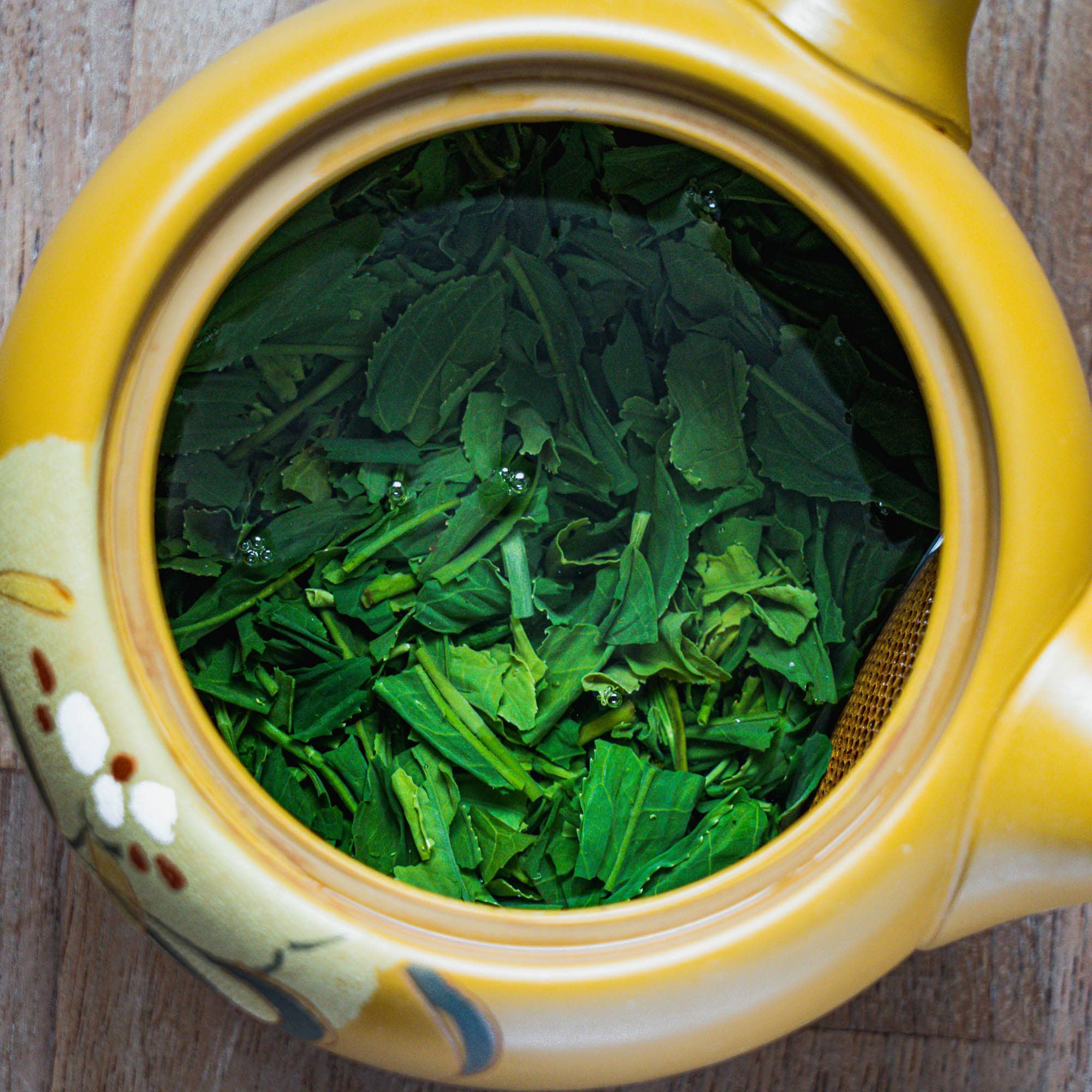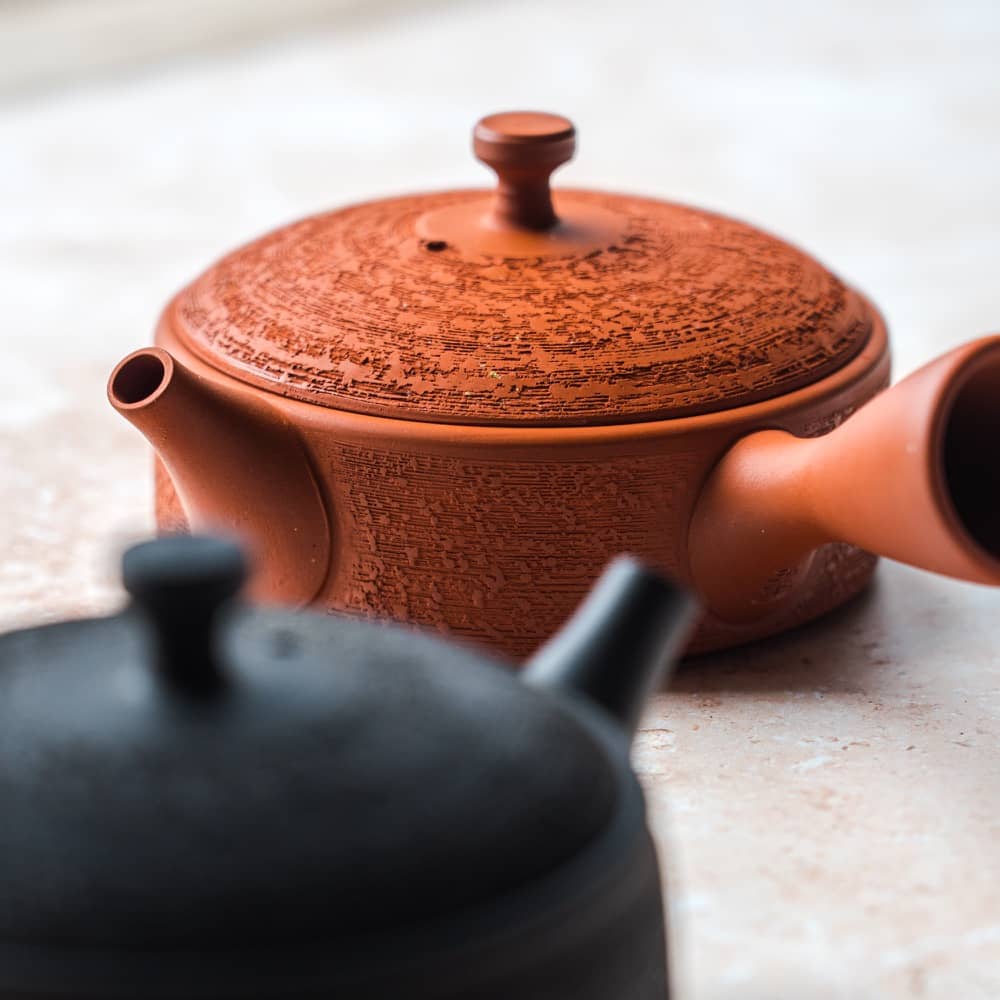A Beginner’s Guide to Making Tea

It’s no mystery that tea is delicious: it’s something you can relax with, develop a passion for, and always learn more about. However, don’t be intimidated by the complexity and intricacy of the teaware setups of ceremonial tea practitioners or hardcore tea enthusiasts—at its core, tea is simple. As tea sage Rikyu said:
The way of tea is nothing more than boiling water, making tea, and drinking it
Here are a few quick tips for those new to the way of tea to help start you on your journey.
Loose Leaf Tea
If you’ve only ever used teabags before, loose leaf can seem intimidating, but once you understand the basics, it’s pretty straightforward. While there are a range of tools and equipment that can improve, refine, and heighten the tea making experience, all you really need to begin is tea, a teapot, a cup, and a way to boil water. If you don’t have a teapot, then an infuser, clean French press, or even a pitcher and mesh strainer can work in a pinch.
Measure out your tea and water
If you have a digital scale, great! If not, that’s okay. Although weighing tea is much more accurate and consistent, as different teas have different densities, you can definitely get by with using a scoop or spoon, as has been done for centuries. Each tea is a little different, but as a benchmark, a teaspoon of sencha is roughly 3 grams.
The easiest way to measure your water is to know the volume of the cups we’re drinking from or the teapot we’re brewing in, and use these to measure the water. If you don’t know the volume of your teaware, you can simply measure how much water they hold, using a measuring cup or a scale.
With this knowledge you can measure out the right amount of tea for your cups. While the ideal ratio varies with tea and personal preference, we recommend starting with around 2-4g per 100ml (roughly a teaspoon per 4oz) for most teas. Once you work out how much tea you need, add it into the teapot.
Adjust your Water Temperature
Different teas brew best at different temperatures. While many black teas and oolongs thrive with boiling water, most Japanese green teas prefer a milder temperature, around 70-80°C (158-176°F). Before you run out and buy a thermometer or temperature-controlled kettle, here’s a simple traditional trick to nailing the temperature while also measuring the water: pour boiling water into the cup(s) first, and then into the teapot.

Pouring boiling water into a cold piece of teaware cools the water by roughly 10°C while heating up the teaware. So by pouring it into the cup, then into the teapot, not only is the water the right temperature, but you’re also using just the right amount of water for your cup(s)!
Managing Infusion Time
Simple, but crucial. A stopwatch, a sand timer, a clock, your phone, counting in your head — all of these can work!
Pour out all of the tea until the last drop

Perhaps the most important rule of them all. Leaving any tea in the teapot with the leaves will cause it to oversteep and become bitter. If you’ve brewed more tea than your cup can hold or you’re making tea for multiple people, pour the tea into a pitcher first. That way you can empty the teapot while making sure that everyone’s cup of tea is the same strength.
Resteep
All true teas (that is, tea made from the tea plant, and not herbal teas) can be re-infused, often many times. Typically Japanese green teas are good for at least three infusions. The second should only be for a few seconds, and the third should be for around 30-45 seconds. Japanese greens are a little special—for most other teas, the subsequent infusions tend to need more time than the first to extract.
Want to step up your tea game?
We suggest starting by using a digital scale (preferably accurate to 0.1g) and an electric kettle. These will go a long way to make your tea brewing faster, more accurate, and more consistent.
From here, we’d recommend acquiring a high-quality, all-purpose teapot, such as a well-built Japanese kyusu. Using nice teaware not only makes tea brewing easier and more enjoyable, but can also make the tea taste better. This is often due to the shape, size, and material of the vessel, with different clays affecting the taste of the tea. You can find all of the teaware you need to get started in our loose-leaf starter set.
Matcha
With its long, storied history and incredibly rich culture, getting into matcha can be daunting, especially when you see the utensils and setup involved in a tea ceremony. Despite this, making a bowl of matcha is incredibly simple. All you need is a bowl, a sifter, something to whisk with, and of course, matcha. While nothing beats a proper chasen (bamboo matcha whisk) for whisking matcha, an electric milk frother, or even shaking it in a jar will get you off to a good start.
Similarly, a dedicated chawan (matcha bowl) is a welcome addition, but any bowl of roughly the right shape and size will do. In fact, one of the most famous tea bowls in the world was actually made to be a rice bowl.
Once you have your tools, the rest is pretty easy.
Prep your tools
This is as simple as pouring hot water into your bowl, pouring it out, and drying the bowl. If you’re using a bamboo whisk, then use this opportunity to quickly soak the tines of the whisk in the hot water, your whisk will thank you. The hot water makes the bamboo more flexible, meaning it is less likely to break and will last longer.
Sift your matcha

Sift 2 bamboo scoops (about 1 tsp, or 1.5-2g) of matcha into the bowl. Always sift your matcha. Matcha likes to form little clumps which are hard to whisk and end up at the bottom of your bowl. These little balls of stubborn bitterness are the enemy of a good bowl of matcha.
Add the right amount of water
A little goes a long way. Around 60-70ml or 2oz is just the right amount. The water should be a little cooler than boiling, so just like with loose-leaf tea, you can pour boiling water into a cup first to cool it down. With some practice, you won’t need to measure the water and you can just eyeball it.
Whisk away and enjoy
A brisk back and forth motion is ideal for incorporating all of the tea with the water and whipping in a bit of air to make some foam. That being said, don’t worry about the foam. Despite the thousands of instagram pictures and facebook posts showing thick, moussey microfoam, the foam really isn’t that important (provided you’re using good tea). In fact, some of the largest tea ceremony schools prefer little to no foam on their matcha. As long as all of the powder is incorporated, you’ve got a good bowl of tea. Matcha is enjoyed straight from the bowl, so no need to fuss around with trying to pour it into a cup.
Want to step up your matcha game?

Consider a chasen, the perfect tool for whisking matcha. The springy bamboo tines quickly mix the tea and are ideal for creating a thick yet fine foam. If you already have a cheaper Chinese or Korean made chasen, then upgrade to a Japanese chasen for a truly exquisite experience.
Next we’d suggest choosing your first dedicated chawan. Deceptively simple, a beautiful tea bowl that fits your aesthetic will soon become one of your most prized pieces of teaware.
We've curated a range of matcha starter sets to help you get started on your matcha journey.

Loose Leaf











